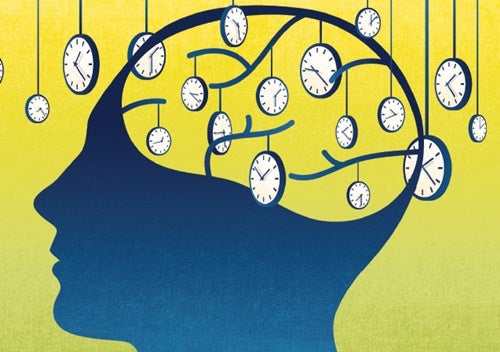The Two Brain Clocks that Help You Predict the Future


Written and verified by the psychologist Valeria Sabater
People make predictions all the time. You know when the favorite part of your song is coming up. You start to walk faster when you sense a traffic light is going to turn red. Yes, you predict the future in a simple and instrumental way and you do it thanks to two fabulous and surprisingly precise brain clocks.
Albert Einstein said that time is little more than an illusion. However, the organ that seems to understand this dimension almost objectively is the brain. Thanks to your brain, you’re able to predict events that may happen at a very specific time and react to them.
This capacity allows you, among other things, to make that last-second turn to avoid an accident. It also helps you choose the right words during a conversation with someone, sensing the words that might help them.
In reality, experts talk more about “tuning in” to a situation, rather than actual anticipation. What you actually do most of the time is adjust to the events that occur around you in order to become an integral part of them, trying to eliminate risks and reap some benefits for yourself.
“Don’t worry about the world coming to an end today. It’s already tomorrow in Australia.”
-Charles M. Schulz-

The two brain clocks that help you anticipate what’s going to happen
Human beings build clocks for one purpose: to help them accurately measure the passage of time. As such, this is always a linear process that follows the same dimension. However, for your brain, the idea of time is somewhat more complex.
When you’re happy and having fun, it goes by incredibly fast. At other times, it seems to almost stand still, especially when you’re experiencing traumatic events.
Likewise, neurodegenerative diseases, such as Alzheimer’s and Parkinson’s disease, lead their sufferers into situations where the concept of time and rhythm is even more altered.
Therefore, we can see that something happens inside the human brain to make us all experience time in many different ways. The answer to this enigma lies in the so-called brain “clocks”.
A place for time
In the human brain, a certain area holds the mechanism for understanding time. In 2005, experts discovered the so-called grid cells. These make up our own personal GPS, which helps us to know where we are and where we’re going. Now, a study from the University of California, Berkeley explained where and how this area of the brain that articulates and controls the sense of time works.
Scientists have called two areas brain “clocks”, which are located in the cerebellum and the basal ganglia. Both work together to allow you to make short-term predictions.
For example, the cerebellum works in a very specific way. It does this in interval times, or in rhythms, and it’s set in motion when it receives information from your senses. It also regulates motor coordination and attention, and, according to experts, it’s the area that allows you to react by anticipating what may happen in the very short term.
The “clock” of the basal ganglia, on the other hand, regulates movement, perception, and calculation of the passage of time.
These brain clocks, each located in a separate region, work in a coordinated manner. Thanks to them, for example, you can react by predicting strategies when you play sports, play chess, or when you talk to someone. When predicting an event, they also use experience and memory to provide information on how you should act or react.

A door to hope for certain patients
The authors of this study, such as Dr. Assaf Breska, point to something as interesting as it is hopeful. Experts know that patients with cerebellar degeneration and Parkinson’s have trouble reacting to stimuli in their environments. The former don’t respond to “non-rhythmic” signals and the latter have deficits relating to rhythm and everything based on sequences (music and movement, etc.).
In both cases, there’s a very clear distortion of the time factor (lack of coordination) that completely affects a person’s day-to-day life. Thus, each type of patient has a problem in one of these brain clocks. Parkinson’s patients suffer from a deficit in the basal ganglia clock, while patients with cerebellum degeneration have deficits in the vital area that anticipates the future.
Here’s the good news. It’s been found that, with adequate training, the function of one “clock” can be replaced by the other. The therapy is conducted by using different computer games and deep brain stimulation. This would allow these people to move and react more freely, as well as better adapt to their environment.
However, these therapies are still experimental. There are no conclusive treatments as of yet, and we’ll be keeping an eye out for the latest developments.
All cited sources were thoroughly reviewed by our team to ensure their quality, reliability, currency, and validity. The bibliography of this article was considered reliable and of academic or scientific accuracy.
- Albert Tsao, Jørgen Sugar, Li Lu ,Cheng Wang et al. (2018) Integrating time from experience in the lateral entorhinal cortex. Nature. DOI 10.1038 / s41586-018-0459-6
- Assaf Breska et al. Double dissociation of single-interval and rhythmic temporal prediction in cerebellar degeneration and Parkinson’s disease, Proceedings of the National Academy of Sciences (2018). DOI: 10.1073/pnas.1810596115
This text is provided for informational purposes only and does not replace consultation with a professional. If in doubt, consult your specialist.








